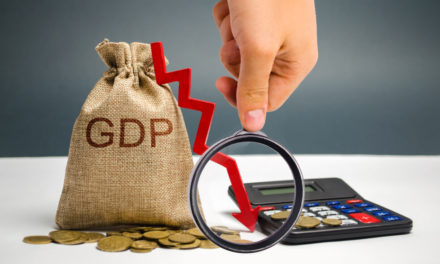The global economy — and the U.S. economy along with it — has taken a turn for the worse in recent months due to rising trade fears and an all-out trade war between the U.S. and China, and it doesn’t appear as if things will get better anytime soon.
“Call it scare-mongering if you like, but many of the data releases (last) week had the unmistakable whiff of a recession.”
Retail sales are down, business investment is next to nonexistent at this point and manufacturer growth has slowed to the lowest pace in nearly a decade.
“Call it scare-mongering if you like, but many of the data releases (last) week had the unmistakable whiff of a recession,” chief U.S. economist Paul Ashworth of Capital Economics told MarketWatch in a recent interview.
Ashworth said that while he isn’t predicting the sudden onset of a recession, the trade war between the world’s two largest economies is hurting both countries, as well as the global economy as a whole.
More evidence lies on Wall Street.
After hitting 26,500 by the end of April, the Dow Jones has lost 850 points by the opening bell Tuesday after Monday’s Memorial Day wrapped up a holiday weekend. And things are unlikely to turn around as long as the trade war wages.
“The dawning realization that U.S.-China trade tensions are not going to be resolved anytime soon continues to rattle markets,” chief economist Douglas Porter of BMO Capital Markets told MarketWatch.
In fact the main thing keeping everything afloat at the moment is the strong U.S. labor market, which has near-50-year-low unemployment. And while companies aren’t hiring at the pace they were six months ago, they also aren’t slashing jobs just yet.
“The U.S. still has a rock solid labor market,” chief economist Scott Anderson of Bank of the West told MarketWatch.
There has been a sharp decline in the cost of borrowing for a new car, home and other business loans thanks to the Fed’s decision to keep interest rates steady this year. Though, most economists say that’s not enough to keep the U.S. from slipping under 2% GDP growth for the second quarter. They also expect the first quarter’s surprising 3.2% GDP to be trimmed to 3% or even less.
If the GDP is trimmed significantly, it could help reshape trade negotiations with China, Ashworth said.
“The strength of the U.S. economy in the first quarter was presumably one of the factors that emboldened President Donald Trump to take a tougher line with China in the trade dispute,” he said. But incoming data “would leave Trump in a more vulnerable position.”




